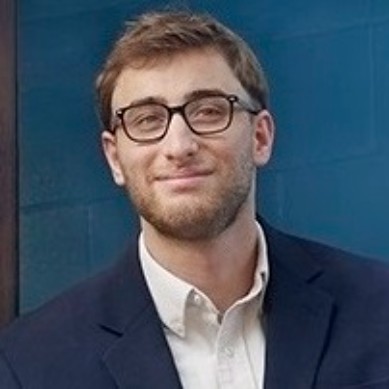Proposed Buddhist Temple in WP to be Reduced in Size
News Based on facts, either observed and verified directly by the reporter, or reported and verified from knowledgeable sources.
The lawyer representing a proposed Buddhist temple in White Plains has announced likely changes to the plans in response to an uproar about them being too large in scale for the Rosedale Neighborhood.
Attorney David Steinmetz, representing Dro Gah Sang Foundation, told the Zoning Board of Appeals on Oct. 9 that the 12,000-square-foot temple proposed for 1 Sycamore Lane will be reduced by more than 25% in size, to at least 9,000 square feet, but likely closer to 35%, or 7,800 square feet.
“We’ve taken notes. We’ve heard you loud and clear,” Steinmetz said about how his client has handled the protests.
As the attorney was leaving City Hall, he said that his client also intends to eliminate a pavilion and bridge from the plans. Revised plans could be submitted to the city within the next week to two weeks.
The plans include what some have described as a “campus” between the two-story temple, outdoor courtyard, artifacts building, pagoda, gift shop and parking lot, though the applicant says they will cover less than 5% of the 3.9-acre site at the corner of Rosedale Avenue and Sycamore Lane, a private road.
Nonetheless, the multiple proposed structures have come with concerns, in part, because of the property’s proximity to wetlands and the frequency of flooding in the area.
“We were extremely concerned about the size of the project, with the resulting encroachment of setbacks meant to preserve and protect the surrounding homes and neighborhood,” said Judy Rubin, one of the many neighbors who spoke before Steinmetz gave his update.
The ZBA convened on Oct. 9 for its second meeting on the project that’s been a topic of interest to many residents for months.
The board grants variances, or what’s known as relief from different zoning requirements during situations of “extreme hardship.” In this case, Dro Gah Sang Foundation needs to get approval for variances pertaining to setbacks, wetlands encroachment and parking.
Rhea Mallett, an attorney representing nine neighbors, also dove deep into her argument and presented planner testimony about how the variances, being requested based on the city building department’s interpretation of the code, were not sufficient for the project, and how more need to be applied for and ultimately approved by the board.
Her argument proceeded the public comment period when about a dozen residents were given the opportunity to express their concerns. Some presented multiple photographs of flooding they feel might be exacerbated, and two petitions were submitted into the record against the project.
“Storms are only getting worse. What will be the consequences if this proposal is approved?” said Rubin.
Dro Gah Sang Foundation “completely agrees with the concerns” of the neighbors regarding wetland and stormwater, according to Steinmetz, and will be adequately addressed with the project.
He said his civil engineer will talk at the meeting on Nov. 6 about the planned stormwater management improvements that will reduce the rate and amount of water runoff.
There was a sarcastic “oh” uttered by someone in the audience in response to the proposed improvements being described as “state-of-the-art,” representing the skeptical tone of attendees at the two meetings.
No one has spoken in support. And no decision has been substantively discussed or made by the ZBA on the variances needing to be approved in order for the project to move forward.
Another common concern was the vision for the project, one people speculated was meant to draw “busloads” of people to the grounds.
“I’m sure the goal is to draw more people to explore and engage in Buddhism,” said Rubin.
The organization refuted Rubin and other residents’ belief after the meeting about it trying to become more of a regional place of worship.
Its representatives emphasize that at most 15 people will be on site per day. The lone exception would come one day per year during a celebration of the Buddha’s birthday.
“It’s not meant to be a profit generator,” Steinmetz said afterwards about the gift shop.
There were questions about the project’s impact to the environment.
Residents alleged the president of the organization, Angela Tang, was responsible for the wetlands already being disturbed, and not needing to be protected to the same extent as if they were untouched.
“They should not be rewarded for their bad behavior,” said Tina Kurzner, another resident.
The applicant’s attorney placed the blame on the previous owner of the property before his client purchased it some five years ago, and dismissed the impact of the tree cutting many zeroed in on.
One resident alleged they talked to the broker who sold the property, noting how little interest there was in building there.
“She told me that at first she contacted three builders to sell the property, and no builder was interested because they said there was too much wetlands there and they couldn’t put enough structures, not even two more houses there without getting variances,” said Jamie Meadow, a resident.
Another referenced a conversation with an appraiser and a real estate broker about the future environmental and traffic impacts leading to a drop in the area’s property values. Others fought back arguing the head of the organization has not been “neighborly” while occupying the property off a private road.

Andy Milone was a freelance reporter who wrote for The White Plains Examiner from May 2024 until January 2025. The Chatham, New Jersey native and Gettysburg College graduate previously worked as a staff reporter for The Waterloo-Cedar Falls Courier in Iowa, Pine Barrens Tribune in New Jersey and The Shippensburg News-Chronicle in Pennsylvania.
